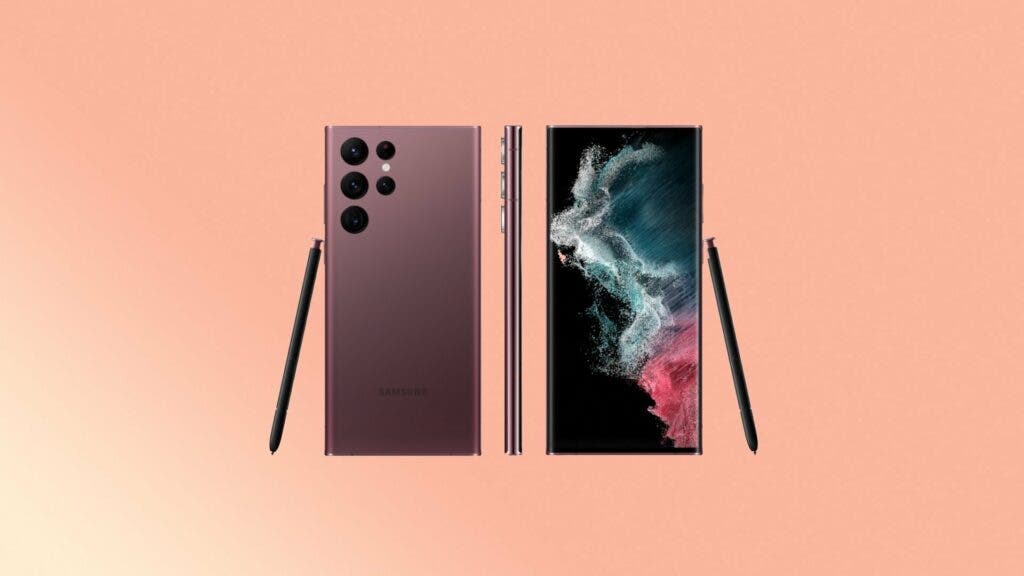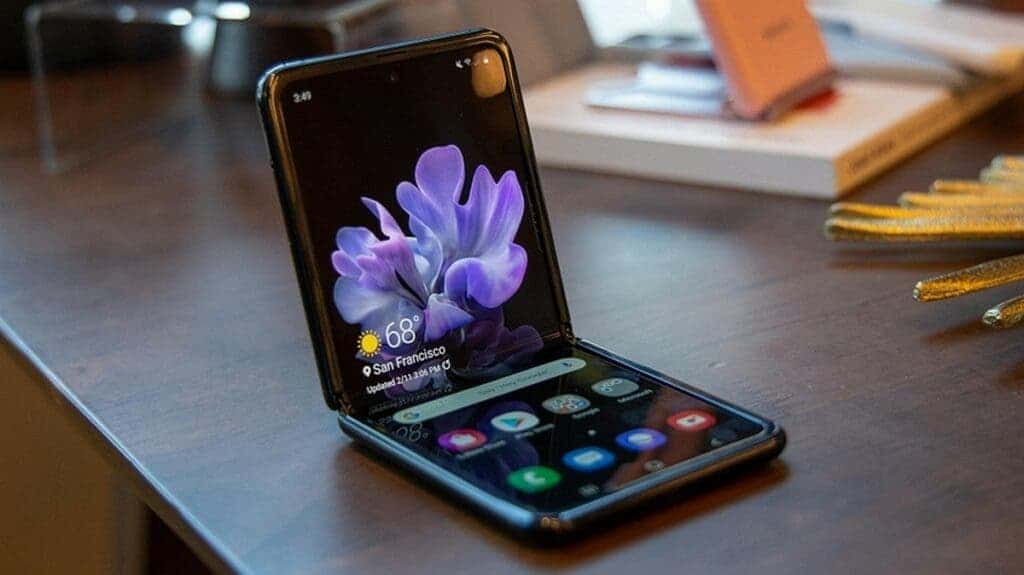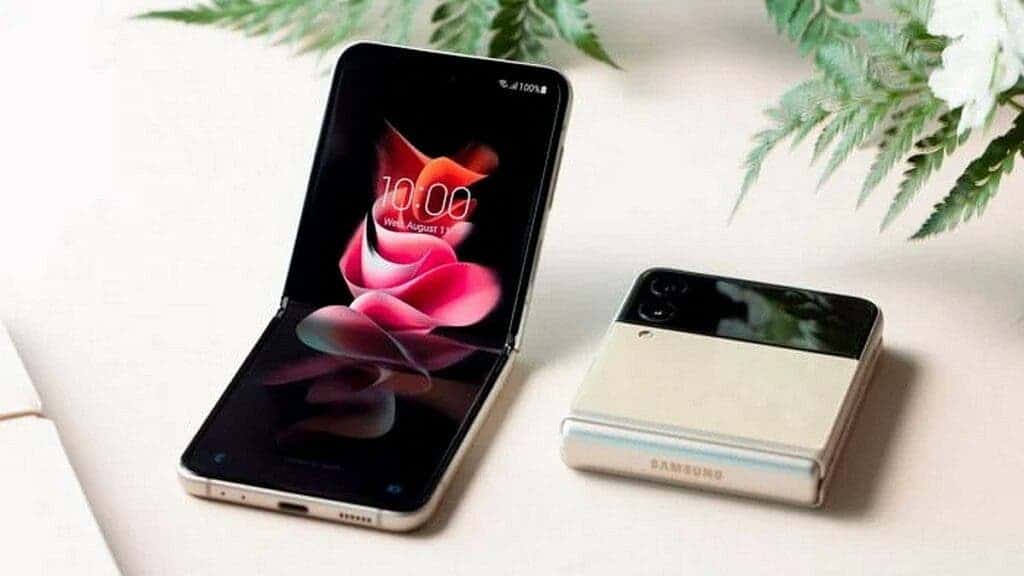The Android smartphone market is much more complex than the iOS market. There are a couple of criteria to consider when choosing the best Android smartphones in a year. However, it is important to note that Chinese brands make the Android market even more complex. Thus, if you are one of those who do not want to have anything to do with China, you may want to read to the end. Even without Chinese brands, the Android smartphone market is still complex. The differences in design, price, hardware, software and other areas are intriguing. However, some smartphones are much better than the rest. Irrespective of price, here are the best Android smartphones that your money can buy
1. Samsung Galaxy S22 Ultra
The Samsung Galaxy S22 Ultra can be considered a “complete” flagship smartphone. Finally, Galaxy Note lovers now have a perfect S-series flagship that they can purchase. Although a bit pricey at $1,200, this device is worth every penny. In addition to its Note-series like design, this smartphone also supports the iconic S Pen. Screen Size? This device comes with a near-tablet screen which supports a huge 1700-nit brightness. As of now, the Samsung Galaxy S22 is arguably the most powerful Android smartphone in the western markets.

In addition to the powerful Snapdragon 8 Gen 1 SoC, it also has a decent battery size as well as a regular fast-charging capacity. These make this device also meet the gaming, productivity and multitasking needs of users. For a camera that outputs great details as well as an 8K video, you can go Pro if you know how to handle the settings. Samsung also makes this device attractive by updating its One UI 4.1 system with Material You. Now, flagship Android smartphones are more customizable than ever.
Samsung Galaxy S22 Ultra succinct specs preview
Released in February 2022, the Samsung Galaxy S22 Ultra is the latest top-of-the-line model in the Galaxy S22 series. This device comes with a 120 Hz AMOLED 6.8-inch quad-HD+ (3088 x 1440) Dynamic AMOLED display that supports HDR10+ video. Under the hood, this device comes with either the Snapdragon 8 Gen 1 or the Exynos 2200. As usual, in China and the U.S., buyers will have the Snapdragon 8 Gen 1 version. However, in Europe and other markets, the Exynos 2200 version will be sold. Both versions come in multiple memory/storage configurations ranging from 8GB / 12GB of RAM and 128GB / 256GB / 512GB / 1TB storage.
On the rear, this smartphone comes with a quad rear camera setup. Specifically, this device uses a 108MP main camera that supports OIS. It also uses a 10MP periscope telephoto camera that supports 10x optical zoom and OIS. Furthermore, there is another 10MP that supports OIS and 3x optical zoom. Lastly, there is a 12MP ultra-wide-angle camera. It is interesting to note that three of the four cameras on the rear supports Optical Image Stabilization (OIS). Under the hood, this device has a 5000 mAh battery that supports 45W fast charging, 15W wireless charging, and 4.5W reverse wireless charging. However, recent tests reveal that the 45W fast charging is not any different from the previous 25W charging.
Specifications
- CPU: Qualcomm Snapdragon 8 Gen 1
- Display: 6.8-inch 1440 x 3088 OLED @ 120Hz
- RAM: 8,12 GB
- Storage: 128, 256, 512, 1024 GB
- Battery: 5,000mAh, max 45W charging, 15W wireless
- Operating System: Android 12 with One UI 4.1
- Front camera: 40MP f/2.2, 26mm
- Rear camera: 108 MP f/1.8 primary, 12 MP f/2.2 ultrawide, 10 MP f/2.4 3x telephoto, 10 MP f/4.9 10x telephoto,
- Connectivity: Wi-Fi 802.11 a/b/g/n/ac/6e; Bluetooth 5.2; 5G mmWave and sub6
- Dimensions: 163.3 x 77.9 x 8.9 mm, 229 g
- Price: Starting at $1,199
Pros
- Decent screen
- Top-notch build
- You can just hate the S Pen
Cons
- Pricey
- No charger
2. Google Pixel 6
The first thing that any smartphone lover will notice with the Google Pixel 6 is its new and amazing design. The Pixel 6 series comes with a different but decent design that you can even call innovative. Of course, the self-developed brand new Google Tensor chip is also a powerful aspect of this device. Furthermore, Google has one of the best cameras in the world thus it doesn’t upgrade its camera system often. Nevertheless, the Google Pixel 6 comes with a camera upgrade. Considering all these for just $600, then we have no choice but to include this device on this list.
![]()
Google’s software optimization is near perfect. Google Assistant and voice typing in Gboard are near-instantaneous, many thanks to the dedicated AI cores. Although the Google Pixel 6 does not come with a telephoto camera, this device captures real-life images. This is especially true for those with dark skin who often get too much “whitening” by the regular camera processing.
In addition to the fact that this device gets regular updates, it is also the first to come with the Android 12 system. With the Material You feature, this device offers dynamic system elements, widgets, coloured apps and many more.
While you may have heard of several bugs hitting the Pixel 6 series, it is important to note that these bugs only hit a few units. Furthermore, Google has since rolled out relevant updates to take care of these bugs.
Specifications
- CPU: Google Tensor
- Display: 6.4″ 1080p OLED, 90Hz
- RAM: 8 GB
- Storage: 128 GB, 256 GB
- Battery: 4,614 mAh
- Operating System: Android 12
- Front camera: 8 MP f/2.0, 84° FOV
- Rear camera: 50 MP f/1.85, 82° FOV (primary); 12 MP f/2.2, 114° FOV (ultrawide)
- Dimensions: 6.2 x 2.9 x 0.4″, 7.3 oz
- Colors: Stormy Black, Sorta Seafoam, Kinda Coral
- Price: Starting at $599
Pro
- Decent camera
- Decent processor
- Android 12 with Material You is a plus
- Five years of security updates
Cons
- No telephoto camera
- Sometimes slow fingerprint sensor
- Updates have been relatively slow
- Bugs hitting a few units
3. Samsung Galaxy Z Fold3
One of the best Android smartphones that money can buy has to be a foldable smartphone. We can’t just ignore these luxury phones like they do not exist. When it comes to foldable smartphones, Samsung and Huawei are on a different level. However, since we are not considering Chinese brands, Samsung takes this spot. The Samsung Galaxy X Fold3 is by far the most decent foldable smartphone that you can get at the moment.

Despite the fact that its a foldable smartphone, it packs all the flagship features of a regular device. Firstly, it not only gives a 6.70-inch regular smartphone screen, it also unfolds into a large 7.6-inch tablet. This device also comes with the flagship Snapdragon 888 coupled with 12GB of RAM and supports S Pen. In fact, both displays support a 120Hz high refresh rate. What more will you want from this device? It is a foldable smartphone thus we do not expect a perfect camera. Oh yes, the Pixel 6 and S22 Ultra cameras completely floor that of the Galaxy Z Fold3. The battery is also comparatively small and may be inadequate. However, these are the necessary sacrifices that this device must make.
In the early stages of foldable smartphone development, there were durability concerns. However, the technology is now more mature and you no longer have to baby-sit your foldable smartphone. Of course, they are still nowhere near the sturdy nature of regular smartphones. Nevertheless, they are not as weak as many think. The price might be a turn off for many users, however, a foldable smartphone is luxury. All these flashy features and premium appearance is available for $1,800. If you can afford it, believe me, you will have one of the coolest smartphones ever.
Specifications
- CPU: Qualcomm Snapdragon 888
- Display: 6.70-inch OLED @ 2268 x 832, up to 120Hz, 1,500 nits peak (external); 7.6-inch OLED @ 2208 x 1768, up to 120Hz, 1,200 nits peak (internal)
- RAM: 12 GB
- Storage: 256 GB, 512 GB
- Battery: 4,400 mAh dual-cell
- Operating System: Android 11 with One UI
- Front camera: 10MP f/2.2 (cover); 4MP f/1.8 (internal)
- Rear camera: 12MP f/1.8 main w/ OIS, 12MP f/2.2 ultra-wide (123°), 12MP f/2.4 2x telephoto w/ OIS
- Dimensions: 128 x 158 x 6.4mm (unfolded); 67.1 x 158 x 16mm (folded); 271g
- Colors: Black, green, silver
Pros
- Pocket friendly
- Fast phone with decent hardware
- Screen – a huge plus
- Security updates until 2025
Cons
- Lacklustre camera
- Poor battery life
- Pricey
4. Samsung Galaxy Z Flip3
If you think that the Galaxy Z Fold3 is too big, then you have no need to worry. There is a decent alternative which may not be as good as the Fold3 but it does a pretty good job. Of course, we are talking about the Samsung Galaxy Flip3. This smartphone is not only practical, it is also portable and price friendly. Basically, the Z Flip3 is the Galaxy S21+ that you can fold in half. This device is a flip smartphone

Like most foldable smartphones, the camera of the Galaxy Z Flip3 is not up to Samsung standards. However, for a foldable device to be cheap, it needs some sacrifices. The camera and battery are the sacrificial lambs in the Galaxy Z Flip3 just like the Fold3. This device will fully fit into your pocket, it is actually the only foldable smartphone that can do this.
Specification
- CPU: Snapdragon 888
- Display: 6.7″ 1080p OLED, 120Hz
- RAM: 8 GB
- Storage: 128 GB, 256 GB
- Battery: 3,300 mAh
- Operating System: One UI over Android 11
- Front camera: 10MP f/2.4
- Rear camera: 12MP f/2.2 ultra-wide (123°), 12MP f/1.8 main w/ OIS
- Connectivity: 5G (incl. mmWave), LTE, Wi-Fi 6, Bluetooth 5.1 Supports eSIM and/or Nano-SIM
- Dimensions: Unfolded – 72.2 x 166 x 6.9mm Folded – 72.2 x 86.4 x 15.9-17.1mm 183g
- Colors: Cream, Green, Lavender, Phantom Black, Gray, White, Pink
Pros
- Regular flagship price
- Premium build quality
- Seamlessly fits your pocket
Cons
- Poor battery
- Lacklustre battery
- Poor charging speed
5. Google Pixel 6 Pro
The Google Pixel 6 Pro is one of the most decent Android smartphones in the market. This device comes with the 5nm Tensor SoC. The Google Tensor chip is Google’s self-developed processor and the Pixel 6 series launches this chip. Under the hood, the Pixel 6 Pro comes with 12GB of RAM and 128GB/256GB/512GB of UFS 3.1 internal storage. Furthermore, this device uses a 6.71-inch LTPO AMOLED display that supports 1440 x 3120 pixel resolution as well as a 120Hz refresh rate. This device also comes with a huge 5000 mAh battery that supports a 30W fast charge, 23W wireless charging, and reverse wireless charging. The battery department is one of the selling points of this smartphone. This device costs $900 and its workability is pretty decent.

Specification
- CPU: Google Tensor
- Display: 6.7” QHD+ (1440×3120, 19.5:9) LTPO OLED, 120Hz, Gorilla Glass Victus
- RAM: 12GB
- Storage: 128, 256, or 512GB; UFS 3.1
- Battery: 5003mAh, 30W (USB PD PPS) wired charging, up to 23W wireless charging
- Ports: USB Type-C
- Operating System: Android
- Front camera: 11.1MP f/2.2 (94° FoV, fixed focus)
- Rear camera: 50MP f/1.85 primary (82° FoV w/OIS), 12MP f/2.2 ultra-wide (114° FoV), 48MP f/3.5 telephoto (23.5° FoV w/OIS, 4x optical and up to 20x “Super Res Zoom”)
- Connectivity: 5G, Wi-Fi 6E (802.11ax), Bluetooth 5.2, NFC, Ultra-Wideband
- Others: Polished aluminum frame, IP68, In-display fingerprint sensor, USB Type-C 3.1 Gen 1, Dual-SIM via eSIM, reverse wireless charging
- Dimensions: 163.9 x 75.9 x 8.9 mm, 210 g
- Colors: Sorta Sunny, Cloudy White, and Stormy Black
- Price: Starts at $900
Pros
- Premium camera
- Excellent software
- Five years of security updates
Cons
- A bit pricey
- Slow fingerprint sensor
- Bugs for some units





